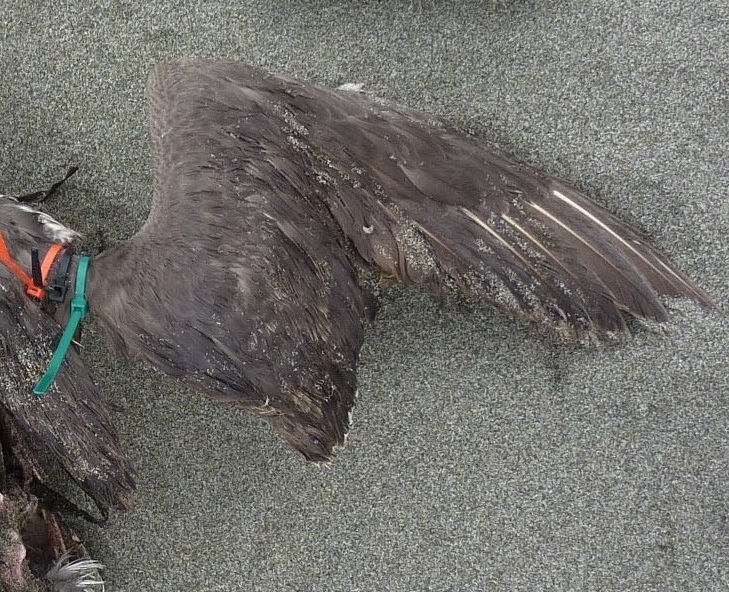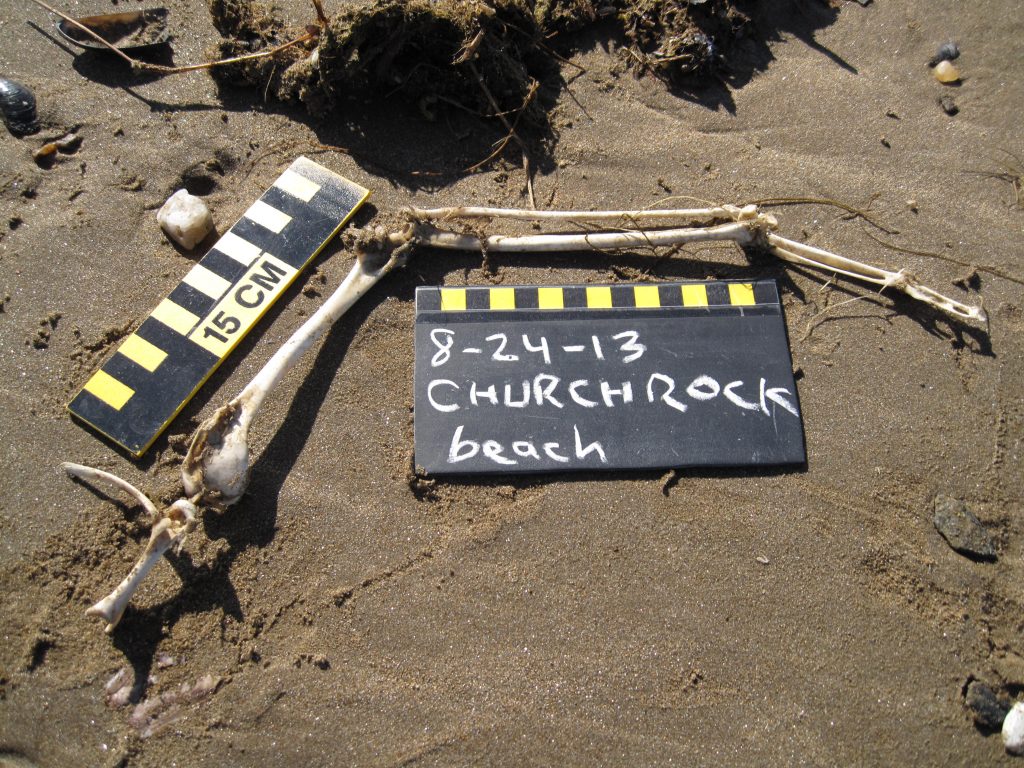Thanks, Randy for sending this amazing photo from Churchrock Beach in Kotzebue, Alaska, along with this note: “Attached here is a photo for your database of some nicely weathered wing bones. I thought you might be able to use it for teaching purposes.”

Sara and Peter provided this complementary photo to the one above – Common Murre #294, from Ma-le’l Mid, Humboldt, CA.
So we took this opportunity to explore the avian skeleton, specifically the wing. From the inside (left), out, the first large bone (large 2 cm process on left end) is the humerus (not to be confused with humorous, the adjective). Largest bone on the inside? COASSTers know recognize the humerus as the bone to attach the cable ties.
Farther out, the paired radius (thinner, nearer to the top of the photo) and ulna (wider, nearer to the slate). To the right, at the junction of these bones and the next (the metacarpus) is where the wing chord measurement starts, at the wrist (view the comparison between a human/bat/bird). This wing is missing the very last digit, where the primary feathers emerge. While the order of the bones remains the same, the structure and proportion changes as a function of the type of flight the bird undertakes – soaring (Laysan Albatross) versus quick short movement (Calliope Hummingbird).






